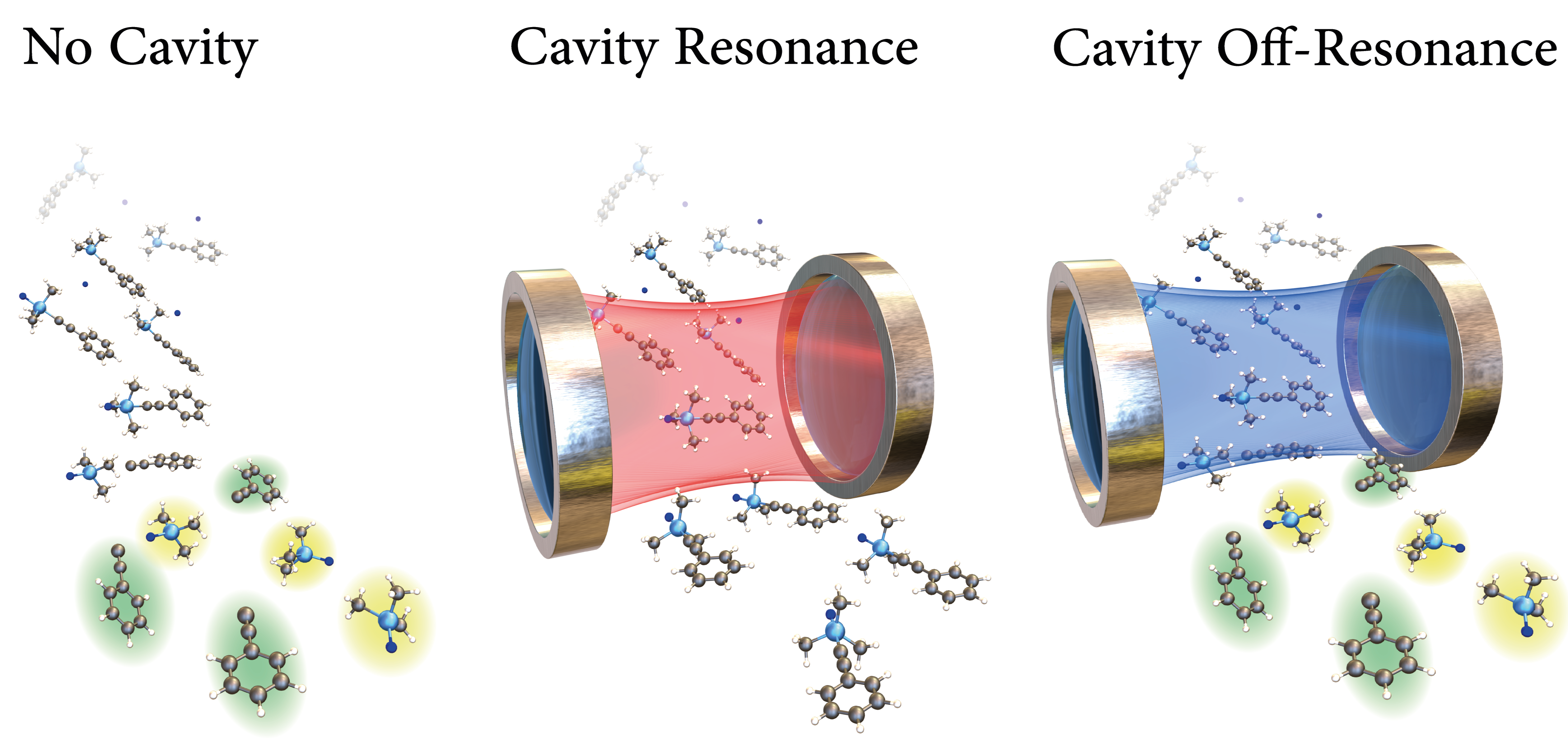Vibrational Strong Coupling for Reaction Control
Predicting how strong light-matter coupling to vibrational modes can modify reactivity
Widely used catalysts, such as platinum, are rare, expensive, and their mining is a burden to our environment. An exciting new direction is to control the speed of reactions by coupling IR resonator structures strongly to vibrational modes of the reactive molecules or the solvent in which they are swimming. Pioneering experiments demonstrated the ability to inhibit, catalyse, or steer a reaction or crystalization process. Our group aims to develop a deeper understanding of the fundamental mechanism and predict promising new applications.
Starting point for the interested reader: (Schäfer et al., 2022) (Schäfer et al., 2024) (Schäfer, 2022)

References
2024
- Machine learning for polaritonic chemistry: Accessing chemical kineticsJournal of the American Chemical Society, 2024
2022
- Shining light on the microscopic resonant mechanism responsible for cavity-mediated chemical reactivityNature Communications, 2022
- Polaritonic chemistry from first principles via embedding radiation reactionThe Journal of Physical Chemistry Letters, 2022